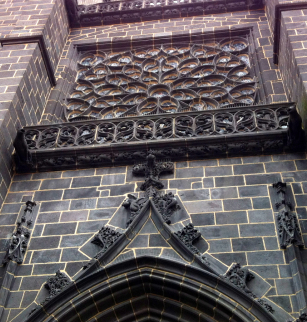Chapelle du couvent de Beaurepaire

Located to the south-west of Clermont, inside Square Aimé Coulaudon, this Romanesque-style chapel dates from the 13th century. It is listed as a Historic Monument.
Les Cordeliers, a mendicant order founded by Saint Francis of Assisi in 1210, arrived in Clermont in the early 13th century. They were first located outside the walls of the city and then had the Beaurepaire chapel built. Then, for safety reasons, the convent moved inside the city walls, close to the cathedral, and the monks built the present-day Les Cordeliers chapel (on Place Sugny) in 1248. During the French Revolution the Beaurepaire chapel was sold as a national asset, then became the property of the municipality. It was used as an explosives and arms depot during the 19th century. It was listed as a historic monument in 1919.
The entire building is 1 metre below the primitive earth level. It is accessed via a flight of five steps made from Volvic stone. The chapel features a single three-bay nave separated by transverse ribs and ending in a flat apse. The lateral walls are punctuated by semi-circular windows. The main door sits under a pointed arch. This chapel is an interesting example of transitional architecture with semi-circular arch openings, typical of Romanesque architecture, and interior barrel vaulting, pointed arches and hook capitals which are more typical of Gothic architecture. Similarly, the use of Volvic stone did not become widespread until the Clermont cathedral was built in 1248. The supports and frames of bays and arches are made from Volvic stone, making it a trailblazer.
Prices
- Free access.













